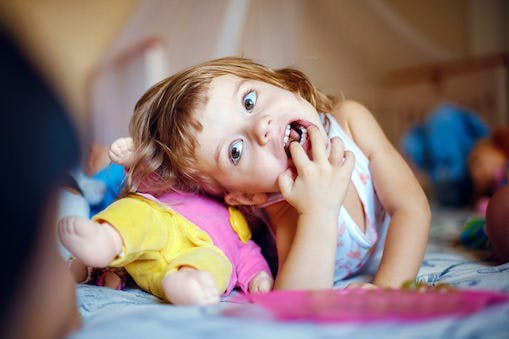Fecal-Oral Transmission: A-to-Z Guide from Diagnosis to Treatment to Prevention

What is fecal-oral transmission?
Fecal–oral transmission occurs when bacteria or viruses found in the stool of one child (or animal) are swallowed by another child. This is especially common in group-daycare settings, where fecal organisms are commonly found on surfaces and on the hands of providers. Usually, the contamination is invisible.
With some infections, such as rotavirus, only a few viral particles are needed to cause an infection. These can spread directly through a group-care setting quite quickly, often spreading by fomites. Other infections, such as salmonella, require a larger number of organisms to establish an infection. In the absence of visible stool contamination, these infections often travel through infected food or beverages.
Swimming pools and water parks can also be locations of fecal–oral transmission. If the water is not visibly contaminated and is adequately chlorinated, just getting the water in the mouth is usually not enough to cause an infection; the risk is greatly increased by swallowing.
Many common infections can spread by fecal–oral transmission in at least some cases, including:
- Adenovirus
- Campylobacter
- Coxsackievirus (hand-foot-mouth disease)
- Enteroviruses
- E. coli infection
- Giardia
- Hepatitis A virus
- Pinworms
- Polio
- Rotavirus Salmonella
- Shigella
- Tapeworms
- Toxoplasmosis
How can fecal-oral transmission be prevented?
Frequent hand cleansing, including with instant hand sanitizers, is the most significant step to help prevent fecal–oral transmission. Hand cleansing is most important after toileting or diapering and before eating.
Safe and careful food-handling practices are also vital.
Teach children never to swallow water in pools or water-play areas.
In daycare settings, the fewer children in diapers or under age 3, the smaller the risk for fecal–oral transmission of infections. Diaper-changing surfaces should never be close to food-preparation areas and should be sanitized between uses. Soiled diapers need to be properly disposed of.
Using disposable towels and cups reduces the risk for infection. Cleaning or disinfecting commonly touched, infected surfaces (doorknobs, faucet handles, shared toys, sleep mats) can also help.
Related concepts:
Dirty diapers, Stool contamination.
References and Resources:
Bonadonna L, La Rosa G. A Review and Update on Waterborne Viral Diseases Associated with Swimming Pools. International Journal of Environmental Research and Public Health. 2019; 16(2):166.
Center for Disease Control and Prevention: Food and Water Precautions


